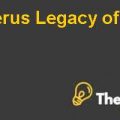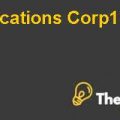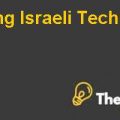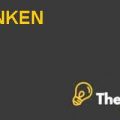H.J. HEINZ M&A Case Solution
1. Describe the activities of Nelson Peltz and the role he played in laying the groundwork for the acquisition by Berkshire Hathaway and 3G.
Mr. Nelson Peltz played the fundamental role after getting a stake of 5.4% in the company. After acquiring the stake, he demanded real control in the management of the company, which he got in terms of two seats on the board. After analyzing the overall market conditions and its comparison with Heinz, the company is incurring useless cost that should be cut in order to focus on some growth opportunities. For this, a massive restructuring took place in which about 27000 employees were fired and a share buyback program was initiated. In addition to this, he was the one who proposed to sell the firm due to its poor performance.
Nelson Peltz wanted the company to reduce the non-core assets and other extra activities by use of liquidation in order to recapitalize for expansion in the operation size and efficiency. They proposed that Heinz should repurchase the stocks from liquidation and try to reduce the risk of over-costing. After the tiring efforts of the active shareholders, the company succeeded in proving itself as an attractive prospect for the buyers to buy, which is evident from the proposal of 3M and Berkshire who were jointly interested in buying H.J Heinz for a price of $72.50 per share.
The overall investment interest of Mr. Shareholder in the company are in such a way that 3,250 shares were held directly and the similar amount indirectly, which are held by Trian Fund Management of which Mr. Nelson was CEO. In addition to this, Trian Fund Management owns shares of about 100,000. With this much percentage of ownership as well as the increased reputation, Mr. Nelson succeeded in getting the buyers with the attractive bid for Heinz.
2. Discuss the positions of various stakeholders including Heinz shareholders, management, employees and citizens of Pittsburgh.
In the given case, Shareholders have the ultimate influence on the control of the company. By looking at the company from a historical perspective, the company was not earning the required rate of return for its shareholders, which created problem for the managers of the company because as it was their ultimate duty. With the increased pressure from the shareholders and the help of Mr. Nelson Peltz, the activist shareholders of the company began to consider selling the company to prospective buyers.
The deal proposed by the merger and acquisition in reverse triangular merger could provide the value for the shareholders of the company as well as can provide the future global growth. The company has always considered its employees as its assets, this has added in the cost of the company. Therefore, after 5.4% stake by Mr. Nelson, he proposed to cut the cost by firing 27,000 employees. From the perspective of employees, the deal created issues.
Some shareholders of the company were in the form of investment advisors, banks, and other investors, who invested some stake within a company and had the authority to make decisions based on future expected results provided by Heinz. However, majority of them were in favor of acquisition due to the high value per share offered by the acquirer.
The management controlled company’s operations; they were engaged in the process of acquisition through legal terms, termination offer, and autonomy due to the positive response from shareholders regarding the company’s acquision.
Their other responsibility was disclosure of information to the shareholders in order to know the expected future results generated by the Heinz. Therefore, without the efforts of management, the shareholders would not know about the company’s operational activities......................
This is just a sample partial case solution. Please place the order on the website to order your own originally done case solution.












